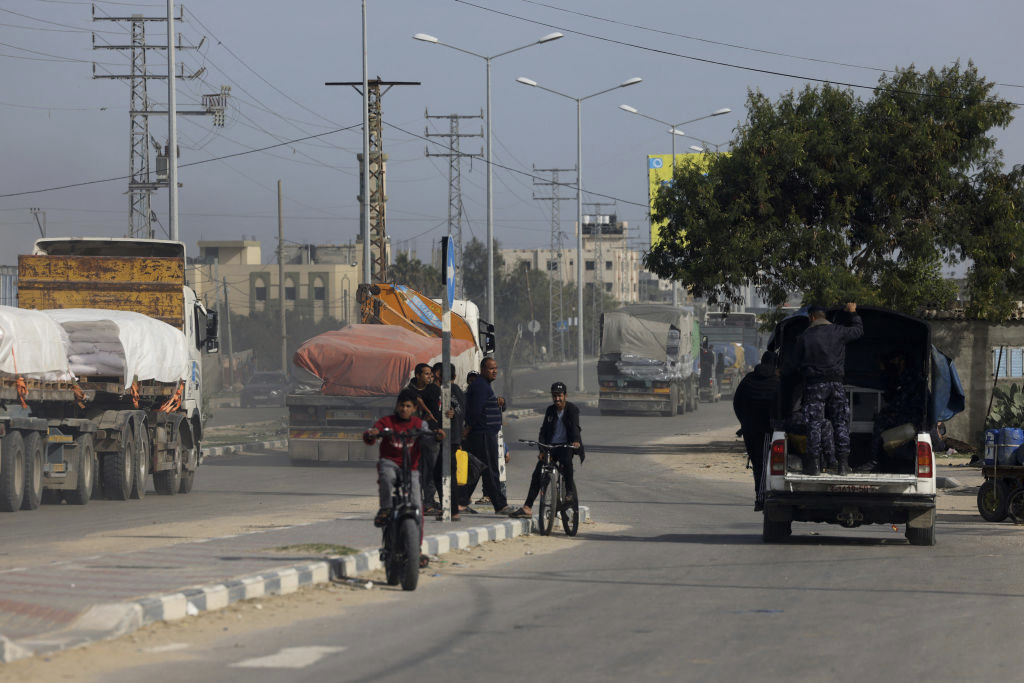The remaining Russian gas deliveries using its oldest transit pipeline, through Ukraine to Europe, stopped entirely on Wednesday as the 2019 contracts expired, the national energy giant Gazprom said.
"Due to the repeated and clearly expressed refusal of the Ukrainian side to renew these agreements, Gazprom was deprived of the technical and legal ability to supply gas for transit through the territory of Ukraine from January 1, 2025," Gazprom said in a statement on the Telegram messaging app.
It said the flow stopped at 8 a.m. Moscow time, mirroring comments from Ukraine.
 The gas enters Ukraine via Sudzha in Kursk, itself contested in recent months amid Ukraine's incusion into the Russian border regionImage: Sergei Chuzavkov/AP/dpa/picture alliance
The gas enters Ukraine via Sudzha in Kursk, itself contested in recent months amid Ukraine's incusion into the Russian border regionImage: Sergei Chuzavkov/AP/dpa/picture allianceWhy are deliveries stopping?
The government in Kyiv had said it would not extend or renew the contracts while Russia's invasion continued, at least not unless some provision for delayed or frozen payment to Gazprom could be arranged, which critics said was not feasible.
"We stopped the transit of Russian gas. This is a historic event. Russia is losing its markets, it will suffer financial losses. Europe has already made the decision to abandon Russian gas," Ukrainian Energy Minister German Galushchenko said in a statement on Wednesday.
Ukraine had stopped buying Russian gas as early as 2015, a year after the Russian annexation of Crimea, but it continued serving as a transit country for others in Europe.
Which countries are affected, which are not?
EU and NATO member Slovakia, and its Prime Minister Robert Fico, clashed with Ukraine and its President Volodymyr Zelenskyy over the stoppage.
 Robert Fico tried and failed for several months to convince Volodymyr Zelenskyy to extend the deliveriesImage: Omar Havana/AP Photo/picture alliance
Robert Fico tried and failed for several months to convince Volodymyr Zelenskyy to extend the deliveriesImage: Omar Havana/AP Photo/picture allianceFico even went to Moscow for talks with Russian President Vladimir Putin after failing to secure some form of extension at the EU leaders' summit in December. Despite Fico's vocal criticism, his government also says it has plenty of gas stockpiled and that it does not anticipate short-term problems.
Slovakian transit company Eustream said on Wednesday that supply via Ukraine from Russia had halted.
Slovakia's appeal for Russian gas
Non-EU member Moldova was the other major continued user of the connection; its government has warned it may have to cut gas usage by as much as a third.
Central European countries, including Hungary and Serbia, receive the majority of their gas from Russia via a different, undersea pipeline — TurkStream — and so are largely unaffected by the change in Ukraine.
EU energy imports from Russia: Much reduced, still meaningful
Ukraine now faces the loss of some $800 million (roughly €770 million) a year in transit fees from Russia, while Gazprom will lose close to $5 billion in annual gas sales.
The EU has sanctioned several forms of Russian energy deliveries and imports, but not stopped them entirely, despite a stated aim of eventually eliminating them.
Still, Russian deliveries to Europe are massively reduced from their 2018 peak, when Gazprom exported 201 billion cubic meters of gas to the continent.
The Yamal-Europe pipeline via Belarus has also shut and the NordStream route across the Baltic Sea to Germany was blown up in 2022.
In 2023, Russia shipped around 15 billion cubic meters of gas through Ukraine to Europe, down from closer to 65 billion cubic meters when the last five-year contract began in 2020. Some past users of the pipeline, like Poland, halted their purchases faster than others.
In 2023, 14.8% of the EU's total gas supply still hailed from Russia, compared to 47% in 2021 before the full-scale invasion of Ukraine.
msh/sms (AFP, Reuters)

 By Deutsche Welle (World News) | Created at 2025-01-01 09:30:59 | Updated at 2025-01-04 04:14:29
2 days ago
By Deutsche Welle (World News) | Created at 2025-01-01 09:30:59 | Updated at 2025-01-04 04:14:29
2 days ago








